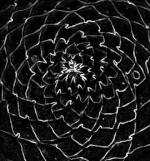Legal and ethical issue
3 posters
Page 1 of 1
 Legal and ethical issue
Legal and ethical issue
In most countries native, wild houseleeks are legally protected (does anyone have a list of the exact legal status of houseleeks in all countries?), but cultivated plants can be traded without permits.
All houseleeks are the offspring of wild-collected plants, some collected long ago (before they were protected), some collected more recently.
My question is: when I buy plants with locality data (mostly collected not very long ago, but anyway cultivated for a number of plant-generations): do I support illegal collecting?
All houseleeks are the offspring of wild-collected plants, some collected long ago (before they were protected), some collected more recently.
My question is: when I buy plants with locality data (mostly collected not very long ago, but anyway cultivated for a number of plant-generations): do I support illegal collecting?

illustrator- Golden Rosette

- Number of plants : 100+ Posts : 224
Join date : 2010-08-04
Location : Slovenia
 Re: Legal and ethical issue
Re: Legal and ethical issue
I think so
Chromaphyo- Golden Rosette

- Number of plants : 450 Posts : 322
Join date : 2008-06-23
 Re: Legal and ethical issue
Re: Legal and ethical issue
To avoid misunderstandings: I have nothing against collecting in nature in principle: I think that collecting a few plants only in very exceptional cases harms a population. And I also think that plants-with-locality-data in collections can be a back-up for in case something goes wrong with a small habitat (think about avalances but also construction of roads or stopping traditional grazing + overgrowing with trees). And such plants can raise an interest in the conservation of habitats.
It is the illegal aspect that worries me: because of this there is no guarantee that only a few plants were collected because nobody knows how many were collected and by how many people.
I realise that it will look strange when a hobbyist/collector asks a ministry for a permit to collect a few protected plants (I can hardly imagine that the average hobbyist/collector will get such a permit!). But I also think that the difference between a serious hobbyist/individual collector and a formal institution like a botanical garden (which is more likely to get the permit!) is not very big. Both hobbists/collectors and botanical gardens can be either serious or sloppy: after all, also some botanical gardens have strangely labelled and lost-label plants.
So, long story, I wonder if there is a way to either know whih plants stem from legal collectings or to collect plants legally myself ...
It is the illegal aspect that worries me: because of this there is no guarantee that only a few plants were collected because nobody knows how many were collected and by how many people.
I realise that it will look strange when a hobbyist/collector asks a ministry for a permit to collect a few protected plants (I can hardly imagine that the average hobbyist/collector will get such a permit!). But I also think that the difference between a serious hobbyist/individual collector and a formal institution like a botanical garden (which is more likely to get the permit!) is not very big. Both hobbists/collectors and botanical gardens can be either serious or sloppy: after all, also some botanical gardens have strangely labelled and lost-label plants.
So, long story, I wonder if there is a way to either know whih plants stem from legal collectings or to collect plants legally myself ...

illustrator- Golden Rosette

- Number of plants : 100+ Posts : 224
Join date : 2010-08-04
Location : Slovenia
 Re: Legal and ethical issue
Re: Legal and ethical issue
Good point.
I ask myself similar questions sometimes.
I think all field collected plants with labels should be organized
in one register. This should be connected with some kind of map (google map could be ok).
The point is that from each location, plants should be collected ONLY ONCE.
Field data should contain name of the collector, date, how many specimen he took, exact location(GPS)... All data should be in a map, so when you're about to visit some place for collecting semps, you should check in a map are those Semps from this location already collected. If you find a new location, you collect few plants and fill data in a map. If you want to monitor wild population or only make photos, this should make things easier.
There are also negative aspects of my idea.
If all locations are known, is this gonna increase pressure of instinction because people will want to collect more samples.
This could be solved if only registered members with complete personal data of some organization could see the locality data and map.
There is also a problem, if Semps are protected by law in most conutries, who will collect the plants? Could only people with
special permissions be collectors?
I also think that if population is too small, plants shouldn't be collected
I ask myself similar questions sometimes.
I think all field collected plants with labels should be organized
in one register. This should be connected with some kind of map (google map could be ok).
The point is that from each location, plants should be collected ONLY ONCE.
Field data should contain name of the collector, date, how many specimen he took, exact location(GPS)... All data should be in a map, so when you're about to visit some place for collecting semps, you should check in a map are those Semps from this location already collected. If you find a new location, you collect few plants and fill data in a map. If you want to monitor wild population or only make photos, this should make things easier.
There are also negative aspects of my idea.
If all locations are known, is this gonna increase pressure of instinction because people will want to collect more samples.
This could be solved if only registered members with complete personal data of some organization could see the locality data and map.
There is also a problem, if Semps are protected by law in most conutries, who will collect the plants? Could only people with
special permissions be collectors?
I also think that if population is too small, plants shouldn't be collected

Marko.D- Golden Rosette

- Number of plants : 200 Posts : 354
Join date : 2008-10-05
Location : Jaksic, Croatia
 Re: Legal and ethical issue
Re: Legal and ethical issue
Some thoughts:
- collected only once: I agree, but a sample should be collected which represents genetic (individual) variation of a population, so not one clone but 10-20. Each should be labelled and grown separately. Most will look very similar, so labelling is very critically here. In this way sufficient plants can be grown for later re-introductions - so we do not end up with one clone without genetic variation. This probably does not make sense with most species, but it does regarding the species which are known from only one or a few sites, as well as for unique populations with morfological "specialities".
If there are a whole number of nearby sites and no visible difference between these, they can be seen as one larger metapopulation and collecting should ideally be done in each of these sites, meaning 1-2 plants at a site and together in the wider area 10-20 plants. Not 10-20 in each small site (and then a few km away again 10-20 ...).
If an isolated population is so small that it cannot stand collecting 10-20 clones (note: not big adult plants but small sideshoots!), it is douptfull if it can survive at all, so maybe especially in this case it should be collected. Of course this makes only sense if the plants do not "disappear forever" in someones private collection without others knowing. If nobody knows that someone already collected in such a population, it is the most dangerous collecting of all, very easily several people can each collect plants in the same site and this adds up to a serious and unnessesary overcollecting. Alternatively: in very small populations some experienced grower could collect seeds and grow plants from these. I would think that this damages a population even less, as long as seed is collected from clusters of plants (flowering plant dies after producing seed, but other plants of the same clone survive to reproduce in later years).
What criteria should be used to determine who can apply for permits?
- collected only once: I agree, but a sample should be collected which represents genetic (individual) variation of a population, so not one clone but 10-20. Each should be labelled and grown separately. Most will look very similar, so labelling is very critically here. In this way sufficient plants can be grown for later re-introductions - so we do not end up with one clone without genetic variation. This probably does not make sense with most species, but it does regarding the species which are known from only one or a few sites, as well as for unique populations with morfological "specialities".
If there are a whole number of nearby sites and no visible difference between these, they can be seen as one larger metapopulation and collecting should ideally be done in each of these sites, meaning 1-2 plants at a site and together in the wider area 10-20 plants. Not 10-20 in each small site (and then a few km away again 10-20 ...).
If an isolated population is so small that it cannot stand collecting 10-20 clones (note: not big adult plants but small sideshoots!), it is douptfull if it can survive at all, so maybe especially in this case it should be collected. Of course this makes only sense if the plants do not "disappear forever" in someones private collection without others knowing. If nobody knows that someone already collected in such a population, it is the most dangerous collecting of all, very easily several people can each collect plants in the same site and this adds up to a serious and unnessesary overcollecting. Alternatively: in very small populations some experienced grower could collect seeds and grow plants from these. I would think that this damages a population even less, as long as seed is collected from clusters of plants (flowering plant dies after producing seed, but other plants of the same clone survive to reproduce in later years).
What criteria should be used to determine who can apply for permits?

illustrator- Golden Rosette

- Number of plants : 100+ Posts : 224
Join date : 2010-08-04
Location : Slovenia
 Re: Legal and ethical issue
Re: Legal and ethical issue
Having 10-20 genotipes from each populacion would be perfect for possible re-introductions but I don't think it would be interesting to most collectors.
I'm not sure for critera for collectors, but they should be pretty strict.
I think that personal data of collector should be included.
Non collectors (montineers, photographers..) should be encouraged to point on new habitats. If someone doesn't have knowlege and tehnology (GPS) to collect the plants, or simply doesn't want to be listed as collector, then they can show habitat to ''official'' collector and share some credits of corse.
I'm not sure for critera for collectors, but they should be pretty strict.
I think that personal data of collector should be included.
Non collectors (montineers, photographers..) should be encouraged to point on new habitats. If someone doesn't have knowlege and tehnology (GPS) to collect the plants, or simply doesn't want to be listed as collector, then they can show habitat to ''official'' collector and share some credits of corse.

Marko.D- Golden Rosette

- Number of plants : 200 Posts : 354
Join date : 2008-10-05
Location : Jaksic, Croatia
 Re: Legal and ethical issue
Re: Legal and ethical issue
Well, I do think that there will be a problem obtaining any collecting permits for protected species when there is NOT some thinking about possible reintroductions behind it ...

illustrator- Golden Rosette

- Number of plants : 100+ Posts : 224
Join date : 2010-08-04
Location : Slovenia
Page 1 of 1
Permissions in this forum:
You cannot reply to topics in this forum